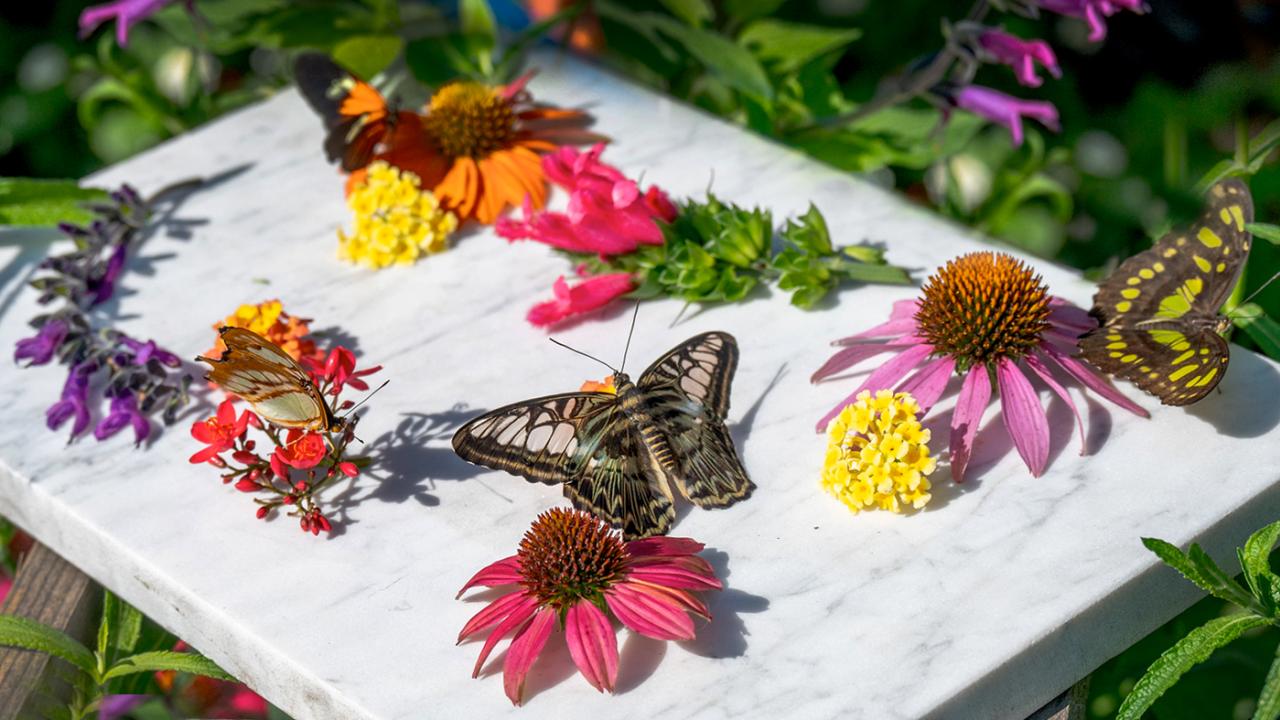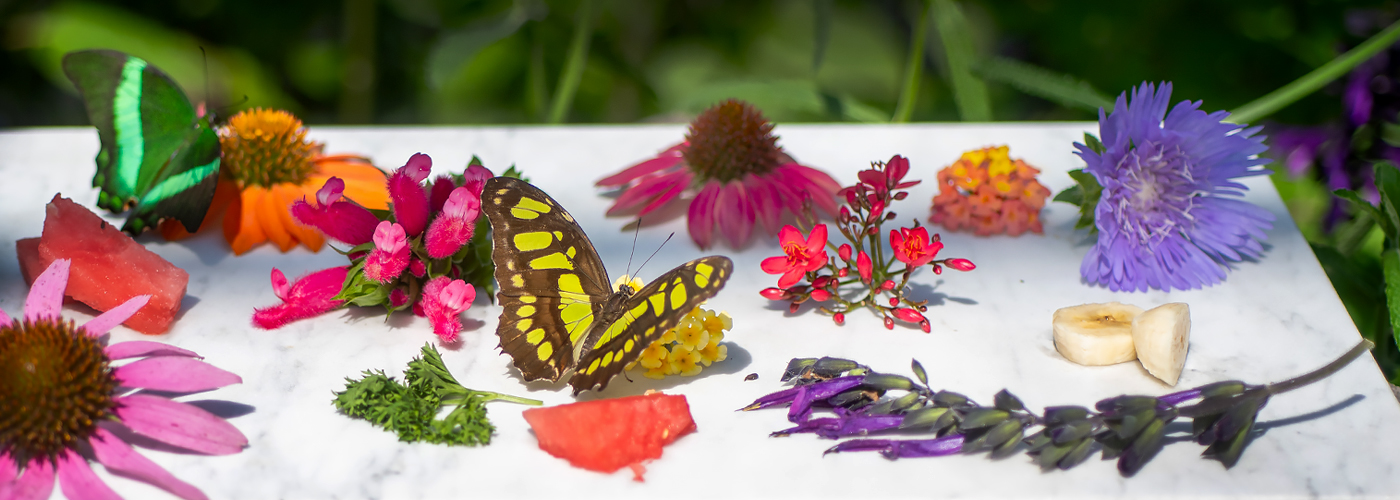

Invite Butterflies to Your Garden
Plant milkweed, coneflowers, and dill to attract butterflies
Butterflies add active beauty to any outdoor space. Invite them into your garden by offering food, water, sun, and shelter.
Inspired by the #girldinner trend, we put together a fresh-from-the-garden #butterflydinner plate for some of our favorite summer visitors (a “girl dinner” is a solo spread of grab-and-go bites).
Essential Garden Elements
Support the entire life cycle by providing the essential elements for each stage of a butterfly's life. Adult butterflies lay their eggs on host plants, where the egg remains until the larva, or caterpillar, hatches and feeds on the plant. The caterpillar will then need a sheltered area, such as one with trees, shrubs, or a woodpile, where it can safely form a pupa, or chrysalis. At last it will emerge as a vibrant butterfly, when it will feed on a variety of nectar plants.
Shelter continues to be important to protect this delicate creature from wind. Water, supplied naturally or artificially, provides the butterfly with essential nutrients. Sun is critical to support both the growth of host and nectar plants, and to warm the butterfly, helping it fly. Tim Pollak, the Garden's outdoor floriculturist, suggests providing a rotation of nectar plants, with three to four in bloom at a time, between April and October.
If you do not have room for one or more of these elements in your garden, find out which are available in other natural areas within 100 feet, and supplement them with resources in your own garden.
Enjoy the Show
Butterflies must land before they can use their proboscis (straw-like structure) to drink nectar. They prefer flat plants with widespread petals. Hummingbirds prefer to hover over plants and often select tubular flowers. Both require a selection of freshly blooming plants and prefer masses of flowers to single blooms. Many native plants are great additions for butterfly gardens. Serious butterfly gardeners consider not only nectar plants to attract butterflies in their graceful adult stage, but also host plants for the larvae or caterpillar stage. Dill or parsley, for example, are host plants for purple swallowtail butterflies, and milkweed hosts monarch butterflies.
The amount of time spent in each stage of life varies between species from weeks to months, and can fluctuate with changing weather patterns in a given year. To attract a specific species, time the availability of essential elements in your garden with its life cycle.
"A relaxing part of gardening is being able to plant something and watch the activity that results from it," says Pollak, who notes that hummingbirds are also attracted to butterfly gardens.
Find Inspiration
You can find butterflies throughout the Garden, especially in the English Oak Meadow and Thomas English Walled Garden.

Plants for your Butterfly Garden
| Plant | Type | Function |
| Buddleia | perennial | nectar |
| Echinacea | perennial | nectar |
| Chrysanthemum | perennial | nectar |
| Rudbeckia | perennial/native plant | nectar |
| Petunia | annual | nectar |
| Salvia | annual | nectar |
| Tagetes (Marigolds) | annual | food |
| Zinnia | annual | nectar |
| Asclepias | perennial/native plant | food, nectar |
| Aster | perennial/native plant | food, nectar |
| Liatris | perennial/native plant | nectar |
| Apple Trees | tree/shrub | food |
| Chokeberry | tree/shrub | nectar |
| Crabapples | tree/shrub | food, nectar |
| Dill | herb | food, nectar, host |
| Fennel | herb | food, host |
| Parsley | herb | food, host |
| Milkweed | perennial/native plant | food, host |

"It's a great garden theme for kids," says Tim Pollak, outdoor floriculturist for the Chicago Botanic Garden. "The whole metamorphosis (physical transformation) is wonderful to observe."

